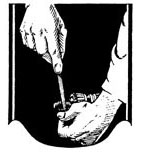
Is Human Life “Sacred”? A Taidan with Kevin Doak
CULTURAL COUNTERPOINT
When the U.S. Supreme Court decided Roe v. Wade and Doe v. Bolton as victories for the sexual revolution in 1973, abortion was still treated — even by the most vocal advocates of women’s liberation — as a regrettable but at times necessary procedure. Until just a few years ago, the rhetoric around abortion from its mainstream apologists was that it should be “safe, legal, and rare.”
In recent years, however, assaults on the human person have become increasingly brazen, and abortion rhetoric has followed suit. “Abortion on demand and without apology” has replaced “safe, legal, and rare.” Some women — for example, HBO star Lena Dunham — have even apologized for not having had an abortion yet. David Daleiden’s undercover videos of “medical researchers” haggling over the prices of fetal body parts and driving hard bargains — one former Planned Parenthood medical director wanted to “bump up” prices because, she said, “I want a Lamborghini” — provided a glimpse into the business of abortion, revealing how contemptuous many in our culture are toward human life.
In the gathering darkness, many pro-lifers have attempted to push back. Some have reached out to death-penalty opponents, anti-animal-cruelty organizations, or immigrant-protection organizations to try to strengthen their position. A common phrasing has emerged from these ecumenical encounters: that human life is sacred, or even that all life is sacred, period.
But what does the Catholic Church teach about life? Is all life, or all human life, really sacred? Georgetown University professor Kevin Doak, an expert on Japanese history and culture and, in particular, Catholic history and thought in Japan, and I recently engaged in a taidan (conversation) about this topic.
You May Also Enjoy
The West's turning away from Faith and the sacraments has opened a void we now try to fill with whatever hucksters come up with next.
Fr. William Virtue concludes “it has been the constant teaching of the Church that there is a serious obligation of maternal nursing.”
America is a seriously confused country. This is vividly shown by the famous public opinion…

